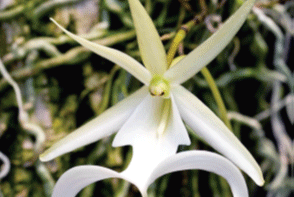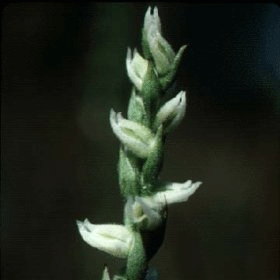
Orchids in North America – a new project for the Smithsonian
The Smithsonian is in the process of developing the North American Orchid Conservation Center (NAOCC). Speaking on this top to the Greater North Texas Orchid Society (GNTOS) at the August 2015 meeting was Thomas Mirenda, orchid specialist at Smithsonian Gardens Greenhouse Facility.
Efforts to preserve orchids in North America
The NAOCC is a major international project jointly sponsored by the Smithsonian Environmental Research Center (SERC) and the United States Botanic Garden. Its aim is to coordinate the efforts of public and private organizations across the continent in ensuring the survival of native orchids throughout North America. There are over 200 species in the U.S. and Canada. This is the first centralized effort to address the unique problems in restoring orchid populations through research, education and coordination with a number of key organizations in each of the various growing zones in North America.
Fourteen partnerships are involved in this project, with three facilities in Texas. They are The Ladybird Johnson Wildflower Center, the San Antonio Botanical Gardens, and the Mercer Arboretum and Botanical Gardens.
One major goal is to develop a national seed bank to cover the diversity of all orchid species in the U.S and Canada. Along with that NAOCC will research and collect the mycorrhizal fungi required to conserve, cultivate and restore native orchids. Because most North American orchids are terrestrial their interaction with the soil fungi is critical to their survival. Many will not survive Ex Situ in a national garden or a home collection without the presence of these complex symbiotic relationships.

Spiranthis parksii, also called Navasota Ladies’ tresses, is a Native of Texas
Currently under development is the Go Orchids interactive website modelled after the popular Go Botany website (developed by the New England Wildflower Society and funded by the National Science Foundation). Go Orchids will initially focus on orchids in New England and the mid-Atlantic area. Orchids of the southeast and Alaska will be added later this year and all remaining orchids in the next two years. Finally, when Hawaii is included, we might be surprised to learn that Hawaii has only three endemic species despite its climate being so favorable toward orchids and it having a major orchid industry.
Learn about orchids of Texas in this database
The Go Orchids tool is up and running now, with 96 species documented. I looked up “Texas” and found 35 species cataloged by scientific name and common name with pictures. Clicking on the pictures took me to a description of the orchid, and clicking of the species button showed the conservation status (secure, rare, etc) and state distributions. Texas has one endemic species, namely the Spiranthes parksii initially discovered in Brazos County.
I found the “pop up” word definitions in the orchid description a very useful “Go Orchids” feature. Click on “raceme” and you will get a picture along with the definition just above the word. (I always seem to need a refresher on that word.)
A great deal of work has been put into this database to make it efficient and educational. So try out Go Orchids for yourself. It has a “Donate” button also so take the opportunity to help them out and show our support for this valuable program.